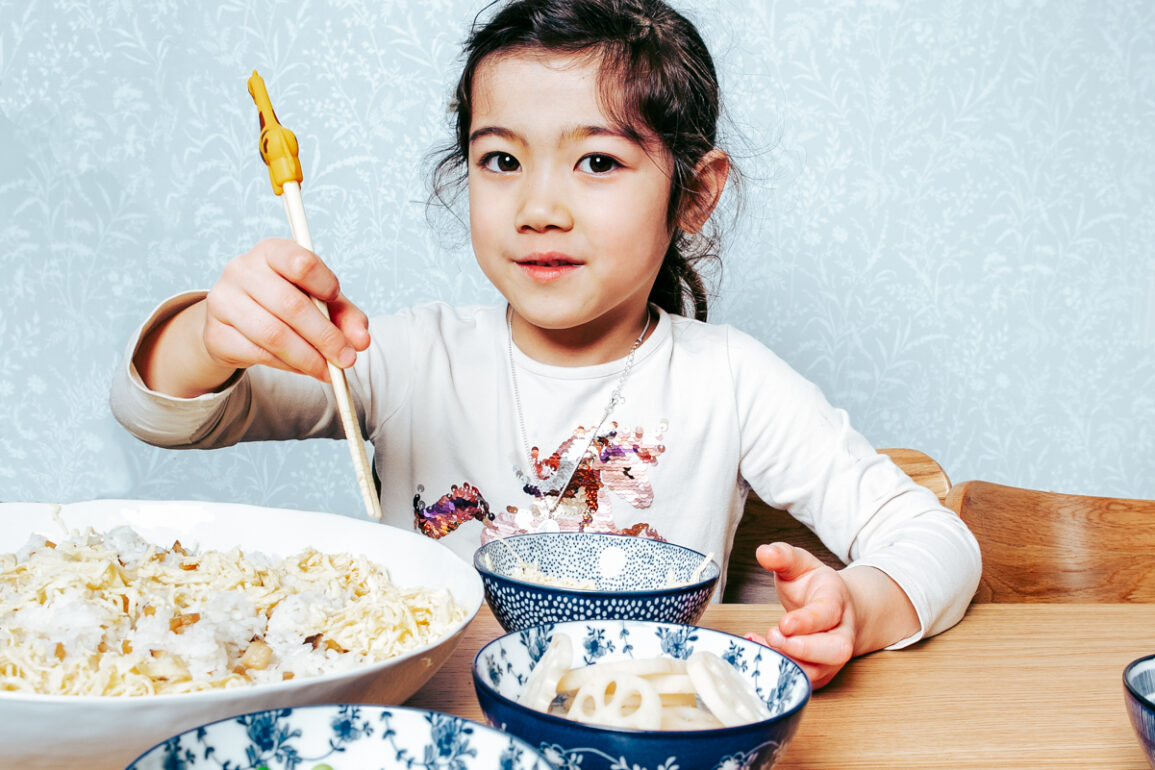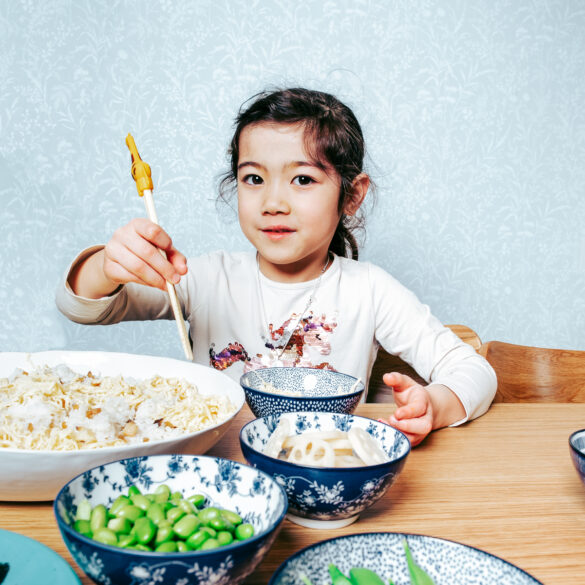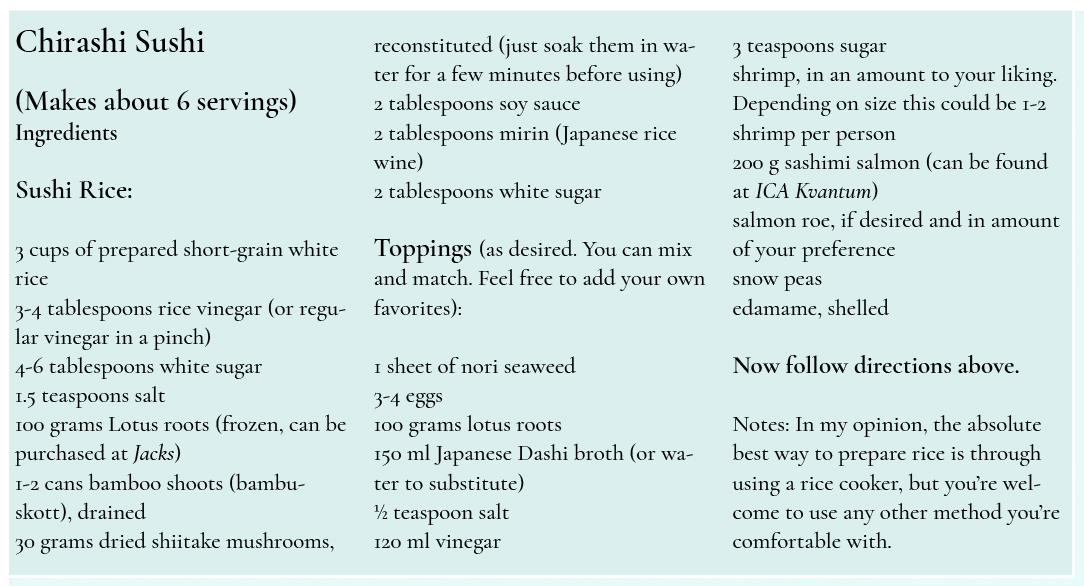For many newcomers to Skellefteå, one of the hardest challenges is coming to terms with new cuisine and finding the ingredients for our own country’s dishes. In this regular column, Jennifer Claywood aims to help all Norrland newbies find a taste of home. This month we explore Japanese food with Skellefteå resident, Tomoko Koyanagi-Gustafsson. Photographs by Donna Richmond
Japan. What comes to mind for you? Whether it’s anime, kimonos, cherry blossoms, shrines, squat toilets, tea ceremonies, chopsticks, Mount Fuji, sumo wrestlers, geisha, ninjas, samurai and their swords, Nintendo, Godzilla, manga, or origami, one thing sure to be on everyone’s list is sushi.
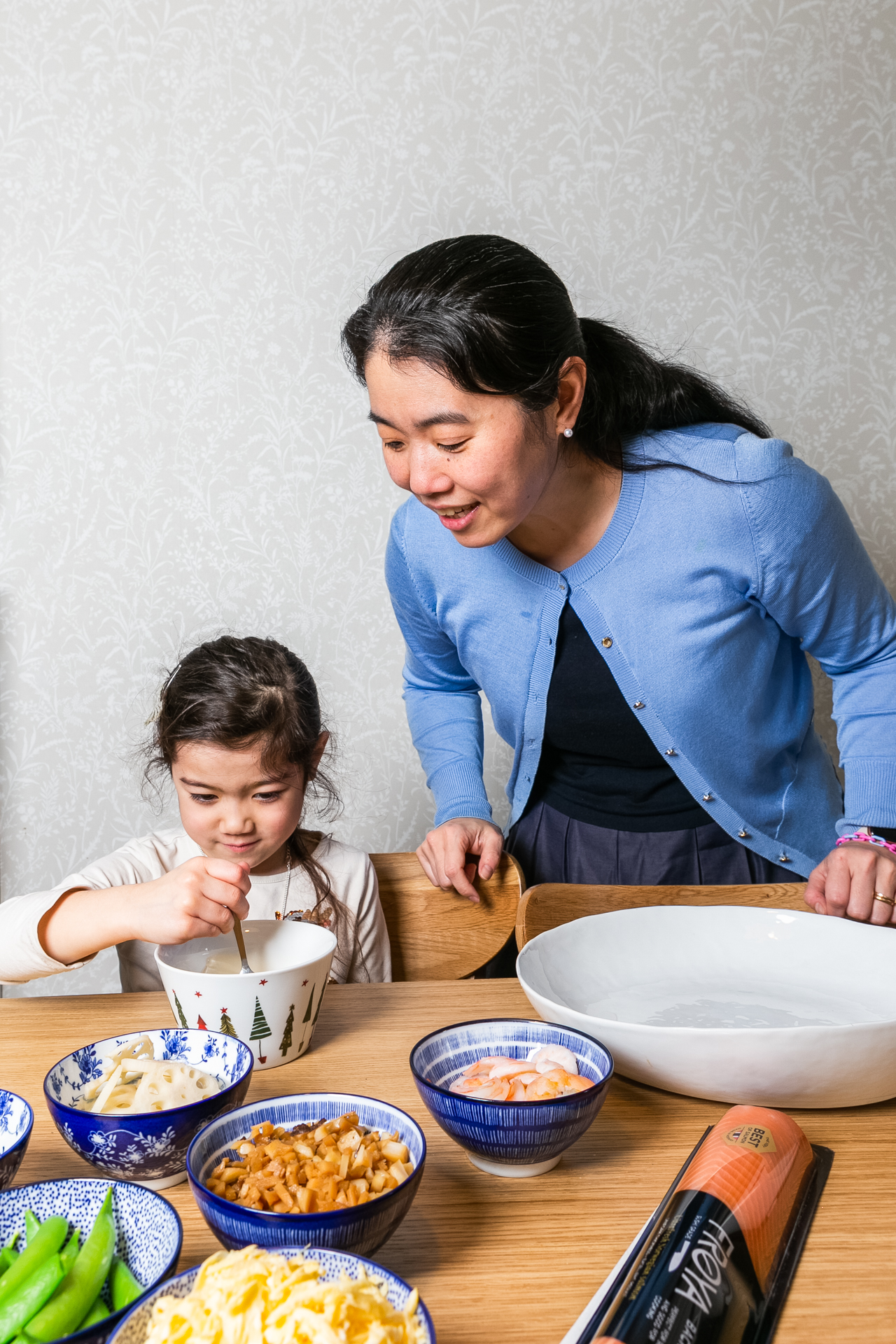
Chances are you love it. But the price tag? Not so much. How many times have you told yourself, “I’ll learn how to make my own. One of these days.” You might have even found yourself at the store Jacks here in Skellefteå, contemplating picking up one of those sushi making kits.
If you haven’t yet figured out how to master rolling up some seaweed with rice, fret not. Tomoko Koyanagi-Gustafsson is here to share with us a delicious and gorgeous way to cheat at it as she shows us how to make Chirashi sushi. Literally translated, this means “scattered sushi.” No sushi-making kit required.
Tomoko was born on the northwestern coast of Japan in a city named Niigata, where she recalls wishing to one day live in a warmer place. Despite that longing, her adventures instead led her to New Jersey (not warmer) and north Sweden (not warmer.)
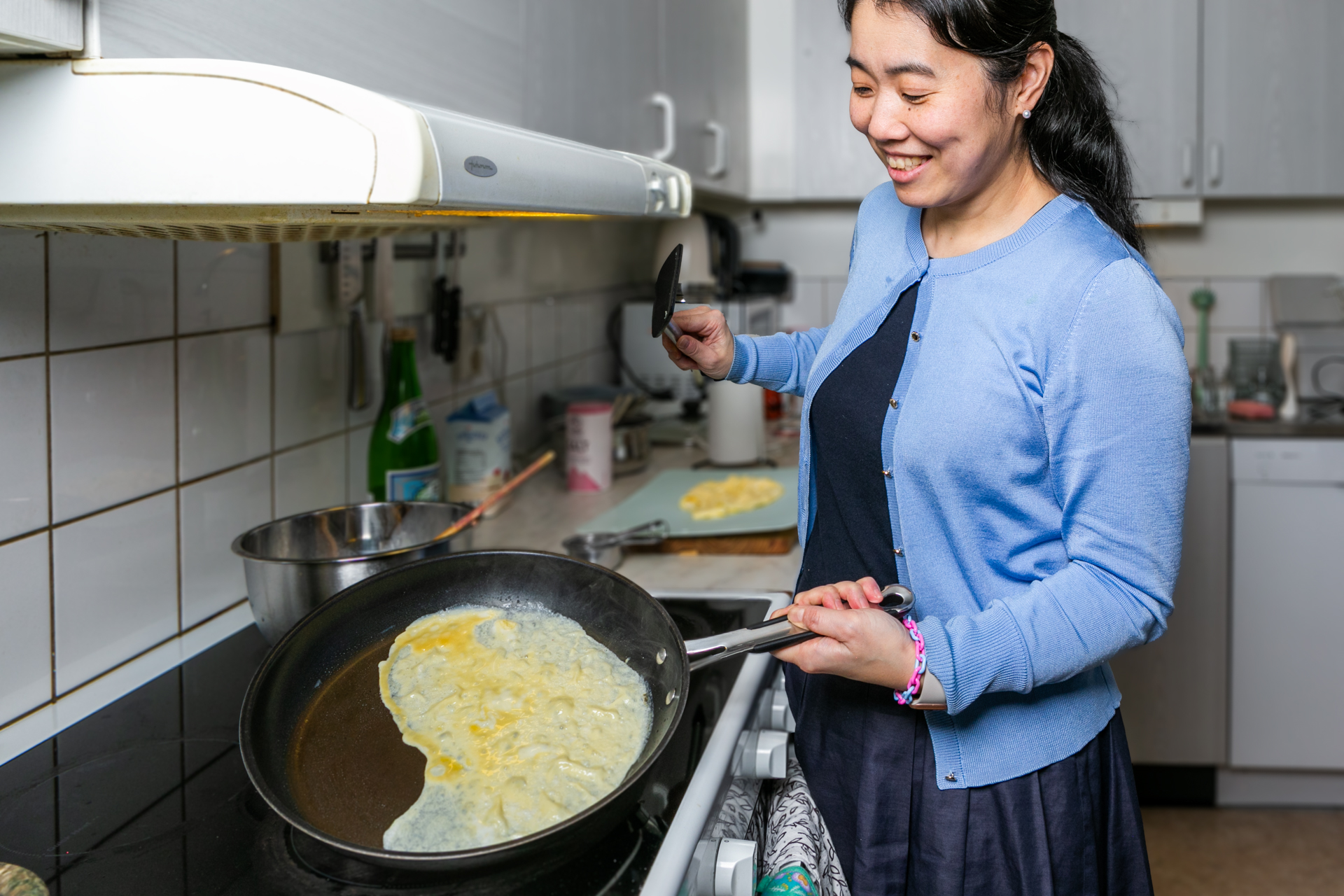
One of the things I hear often from international residents in Skellefteå is that they didn’t know how to cook traditional favorites until after moving from their home country. Convenience foods are commonplace in most cultures and when you and your family are working and going to school, it can be difficult to find the time to cook from scratch. Until leaving the shelter of your own culture, it’s hard to imagine that daily routines almost as common as breathing might become impossible.
Coming from a coastal city, Tomoko is fond of traditional Swedish foods such as surströmming, smoked fish, and hard-to-find eel. While the
seafood here is not often as fresh as that she grew up eating, she admits that she prefers the colder winters here to the wet winters of her youth.
During the preparation of this dish, we had help from Pär, her husband, and their 5-year-old daughter Julia. While Pär and Julia moved back and forth from the kitchen to the playroom, Tomoko told me of her move to Skellefteå.
She was a new mother with no friends moving into a strange place in the middle of a very dark period of the winter. For those of you who know the sociable Tomoko, you’ll guess this was a difficult period for her. As time moved on, SFI helped her meet people that were going through similar experiences. Today, ventures such as Norrland Living and Expats and Friends (EFA) Skellefteå, offer newcomers easy ways to get connected with people who can sympathize with the struggles of learning how to grow here.
If you’re interested in growing in other ways, I offer up this gorgeous but relaxed recipe to get your sushi fix. (Ingredients in blue box below)
Directions:
Before cooking your rice, you’ll want to rinse it and let it rest for 30 minutes. You will also want to use a little less water when preparing your rice for this recipe. While the rice is cooking, mix the vinegar, sugar and salt until dissolved. You may want to heat it gently on the stove to fully dissolve the sugar.
Mix soy sauce, mirin, and sugar. To that slurry, add sliced lotus roots, drained bamboo shoots, and reconstituted shiitake mushrooms. Leave to sit. This will be mixed into the rice.
Prepare the toppings.
For the omelette: Oil a pan over medium high heat and remove the excess with a paper towel. Whisk the eggs together and then fry a thin layer in the prepared pan. Move the omelette to a cutting board and slice into thin strips.
For the lotus roots: Mix dashi (or water), vinegar, salt, and sugar and stir to dissolve. Heat up the lotus roots on the stove before adding vinegar mixture. For the shrimp, salmon, and/or roe: prepare as desired.
Heat the snow peas and edamame if desired and set aside to scatter.
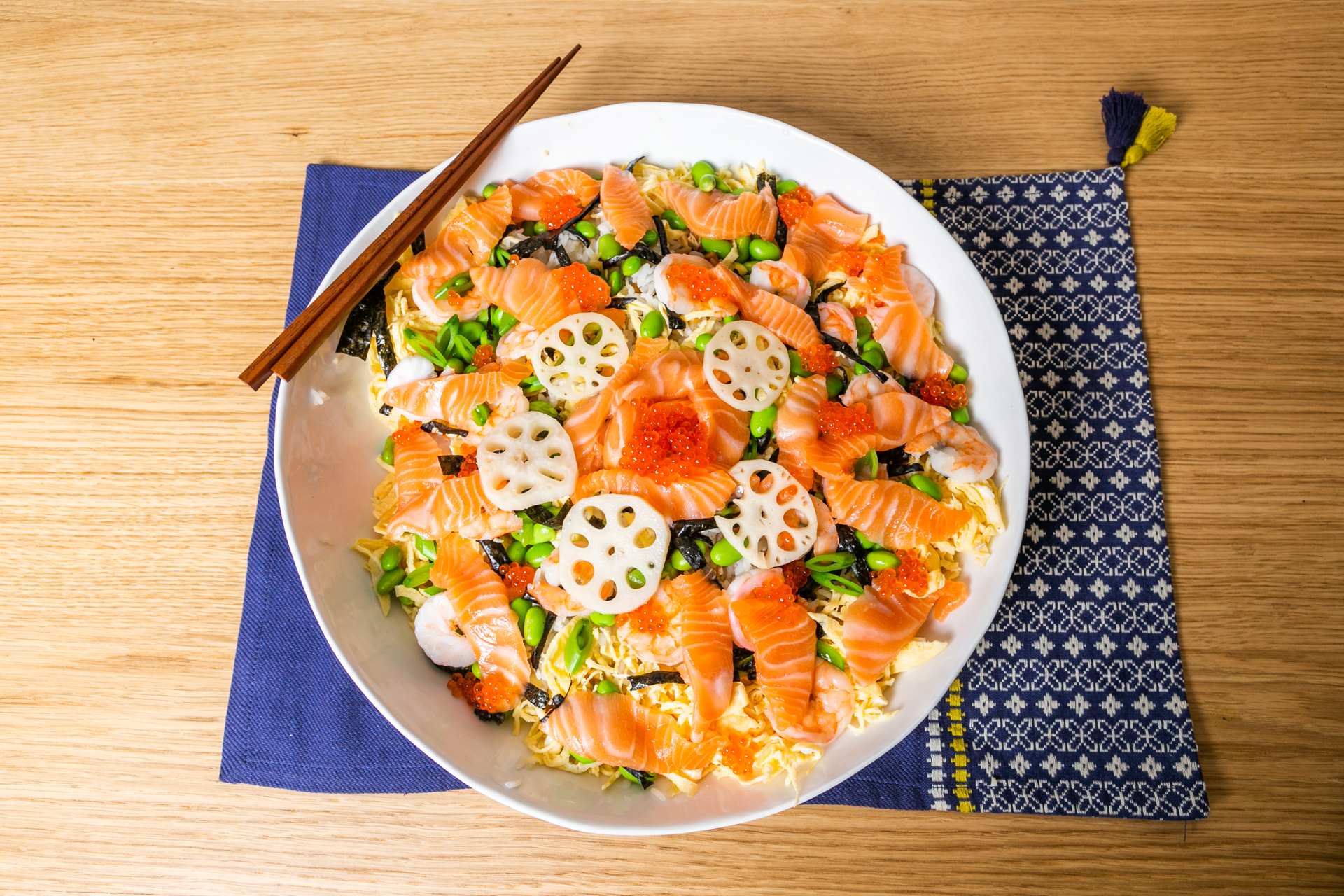
When rice has completed cooking, pour over the vinegar mix and fluff to combine. While you are fluffing the vinegar mix into the rice, grab a volunteer (willing or not) to fan the rice while you mix. Yes. You read that right. Fan. The trick here to perfect sushi rice is to spread it out into a large shallow bowl to cool, to get a great shine, and to soak up that delicious rice vinegar flavor. For something a less traditional, feel free to use a blow dryer on cool to get this done. You know, in case you’re short a hand fan in the kitchen. Fold in the soy sauce vegetable mix to the rice. Scatter your choice of toppings onto the shallow bowl of rice and dig in!


